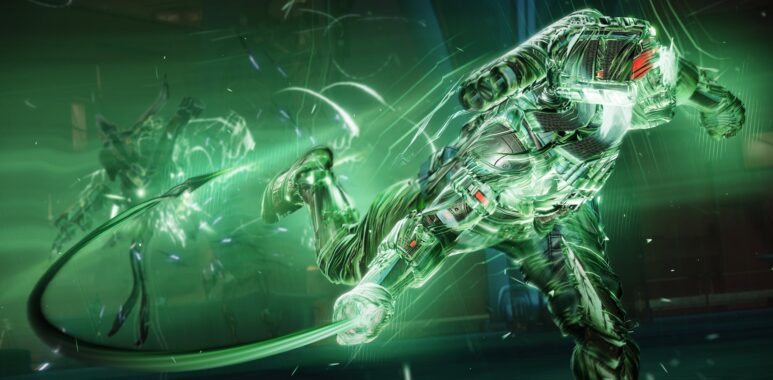
Review: Destiny 2 Lightfall
Long-running live games are difficult to manage and extend in new ways. A game like Destiny 2 must cater to many masters after so many years, game types, earlier adjustments, and distinct audience segments. With Destiny 2’s next addition, that struggle is amplified. Lightfall is the last installment of the story arc that began with the original game’s release in 2014. It falls short as a story and in a few other important aspects. But, being a progressive development of what has come before, it brings several significant additions to the table.
Lightfall has arrived and brought PvP updates with it. Read our deep dive on the latest and future changes:
💠 Playlist revisions
💠 Fireteam-based matchmaking updates
💠 Competitive Division info
💠 Iron Banner and Trials of Osiris
💠 And more!⚔ https://t.co/Juj6eUpqXz pic.twitter.com/gnobcR6va6
— Destiny 2 (@DestinyTheGame) March 22, 2023
Lightfall sets the scene quickly, taking place immediately after the horrific events of Season of the Seraph. Following a brief slideshow presented by Lance Reddick’s Commander Zavala’s silky-smooth voice brings everyone up to speed, it’s all hands on deck as the Witness finally arrives in the Solar system to confront the Traveler. From the first mission, the action picks up speed as a new Shadow Legion of Cabal, commanded by a revived Calus, sets route for Neptune, and you hitch a ride alongside them in an attempt to avert a catastrophic disaster.
Our end begins.
Lightfall is here. Go to war against our biggest foe.
❇ https://t.co/856URKrJ8R pic.twitter.com/157FgPHyTi
— Destiny 2 (@DestinyTheGame) February 28, 2023
The Witness, Destiny’s long-awaited last adversary, comes in our solar system to inflict a blow against mankind and its friends in the opening moments of Lightfall. Nevertheless, any enthusiasm is immediately wiped away when you are strangely and curiously pulled from the action to participate in an apparently unconnected sidequest in the Neptunian city of Neomuna. Not only is the plot a low-stakes distraction that pulls your attention away from the genuine struggle on Earth, but it also makes no sense. That’s not just my opinion; some of the Destiny community’s most brilliant lore brains have been absolutely baffled by Lightfall’s tale.
Train steel against steel, Guardians.
Iron Banner: Control is back! Lord Saladin awaits you in the Tower. pic.twitter.com/KuFxipcIam
— Destiny 2 (@DestinyTheGame) March 22, 2023
Most of the plot revolves around The Veil, a massively powerful relic that you must pursue throughout the game that is claimed to be the most significant artefact in the cosmos. The reasons behind this, however, are not explored. Calus, the newest Witness Disciple, is as extravagant as ever and now resembles a Pacific Rim kaiju decked out in armoured kitchen equipment. Despite this, he’s ultimately little more than a hedonistic bullet sponge who falls well short of The Witch Queen’s Savathun, Bungie’s sci-fi sandbox’s gold standard for outstanding villains. Calus is regrettably handled as a throwaway thug serving the Witness rather than the grandiose conqueror that fans have grown to know, love, and despise over the years, despite being set up as Destiny 2’s next significant danger throughout Season of the Ghosts.
Face off against our biggest threats and prepare for our greatest battles to come.
This week:
💠 The Arms Dealer
🥇 Bonus Vanguard Rep
💀 Vault of Glass
⚙ Shattered Throne pic.twitter.com/RUeWrw4ZvM— Destiny 2 (@DestinyTheGame) March 21, 2023
The gorgeous metropolis of Neomuna on Neptune is devoid of life. It lacks the spirit of discovery and adventure that distinguishes the game’s finest places. Nonetheless, the faraway planet contains several exciting battle places and activities, such as energising public combat arenas, new opponent combinations, and the game’s most fearsome non-boss adversaries, the Tormentors – a fantastic challenge anytime they appear.
Saladin has come home to match Guardian against Guardian.
Iron Banner: Control has returned. 🔥🐺 pic.twitter.com/xLl4TCD5HB
— Destiny 2 (@DestinyTheGame) March 21, 2023
Destiny has used major upgrades to new subclasses or tweak powers since the game’s inception, but Strand’s increased mobility is the first item in many years to truly shake up a meta that sometimes feel stuck in mud. After a year of outstanding changes since the Witch Queen, the personality of each subclass is finally more defined, and their build potential is more balanced and more fascinating than ever before. Another significant change is that Lightfall has altered the way Destiny handles difficulty in endgame tasks, increasing it to eleven in some circumstances.
Queensguard, your watch has begun.
Fight on behalf of Queen Mara Sov, venture into the Ascendant Plane, and defend the home front against fierce foes.
🌎 https://t.co/Fz7FNvVQvi pic.twitter.com/zMkiFSv4UU
— Destiny 2 (@DestinyTheGame) March 20, 2023
Despite certain annoyances, Destiny 2 continues to make progress in catering to a broad player population with various demands. Lightfall is hit-or-miss, but any hiccups should not be enough to dampen players’ eagerness for further adventure or their anticipation of the epic’s conclusion over the following year.

